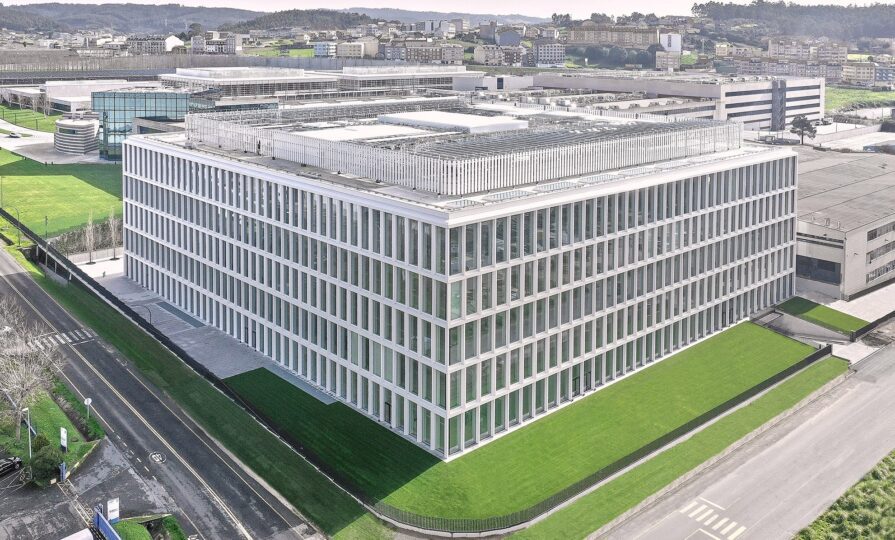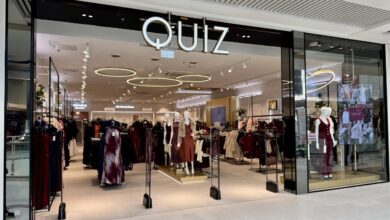Why Inditex is betting on speed while rivals retract
Inditex’s latest half-year results reveal more than stable profits. The Spanish retailer is investing heavily in logistics, automation, and store refurbishments to blend online and offline channels, setting itself apart as rivals retrench in a challenging market.

Register to get 1 more free article
Reveal the article below by registering for our email newsletter.
Want unlimited access? View Plans
Already have an account? Sign in
Fashion retail is in a moment of reckoning. Inflation, freight costs and currency headwinds are pressuring margins across the board, while digital disruption continues to reshape how consumers shop. Many players have responded by scaling back their physical footprint, trimming overheads, or leaning heavily into online channels.
But Inditex, the Spanish parent company of well-known fashion brands of Zara, Pull&Bear, Massimo Dutti, Bershka, Stradivarius, Oysho, and HomeZara, is charting a different course. Its latest half-year results show not spectacular growth, but steady resilience. More importantly, they reveal a retailer putting big money behind logistics and physical retail in a way that stands apart from rivals.
Over the first half of 2025, Inditex managed to keep its financial engine humming, with revenue and profit edging higher despite a complex market. On a reported basis, sales nudged up just over 1%, but when adjusted for currency swings, the growth is closer to 5% — a sign that underlying demand remains solid. Gross margins held firm at just over 58%, showing the group has been able to absorb higher costs without denting profitability.
Operating expenses ticked up, yet EBITDA and operating profit still managed slight gains, highlighting the efficiency of Inditex’s model even as it invests in expansion. Cash generation also improved, with funds from operations rising 5%, giving the group room to pay a steady dividend and fuel new logistics and store initiatives.
Headline figures may look modest, but the underlying picture shows a retailer doubling down on resilience. Inditex opened stores in 35 markets, bringing its global total to 5,528. Between 1 August and 7 September, sales rose 9% year-on-year in constant currency as autumn and winter collections hit the shop floor.
Most importantly, Inditex is putting capital expenditure of €1.8bn (£1.56bn) into play for 2025, half of it earmarked for logistics. A new €900m (£778m) distribution centre in Zaragoza is already operational, while the group has invested in Theker Robotics, a start-up focused on AI-driven automation.
Vineta Bajaj, ex-Ocado and now CFO at Rohlik Group, sees the investment as transformational, and says that the new distribution centre shows “its priority is getting stock to stores and customers faster”.
“With heavy investment in automation and robotics, the group is cutting the time it takes for products to move from factory to shelf and lowering the risk of popular items selling out,” she adds. “The whopping €900m (£778m) budget is about speed as much as volume.”
That focus on speed, Bajaj notes, directly supports Inditex’s store strategy. “Instead of being conventional sales outlets, the stores act as service centres and give shoppers a chance to interact with the brand. A refit makes the space more inviting, while the upgraded back end means each store can handle click-and-collect as well as returns. This way, physical stores feed directly into the online business rather than compete with it.”
Everything connects via omnichannel integration, Bajaj says. “Real-time stock tracking, ship-from-store options, and local collection blur the line between online and offline. Customers get more choice, and Inditex keeps inventory efficient,” she explains. “That balance also softens the impact of rising costs and currency swings. It’s a proactive, long-term play to maintain leadership, not just a defensive response to market pressures.”
Inditex’s contrarian bet on physical retail is just as striking. While many fashion groups are shuttering stores, the company continues to open new ones and refurbish old ones. RFID soft-tag systems are rolling out across Zara and its other chains, boosting both inventory visibility and customer experience.
Graham Sykes, global executive creative director at global brand specialist Landor, argues that this is about more than retail infrastructure. “This is fast fashion wired for culture: instant, emotional, and always on. Inditex has cracked the code: chase culture, not just fashion,” he says. “By fusing tech, logistics and stores, it gives customers exactly what they want, when they want it – the thrill of immediacy with the ease of choice. That’s why while rivals are retreating, Zara feels unstoppable.”
For Sykes, the Zaragoza hub symbolises Inditex’s wider priorities. “Zaragoza isn’t just a warehouse, it’s a nerve centre. A €900m investment that says: we’ll own our speed, our scale and our future. It gives Inditex the muscle to flex stock, reroute supply and respond as trends shift. On paper its efficiency – in practice it’s brand power.”
On the store front, he echoes Bajaj, saying, “Inditex knows stores are brand beacons. They’re places to dream, to discover, to engage – but also fulfilment hubs that handle collections, returns and reassurance. The magic is in the synergy: online and offline content, storytelling and product all working together. Inspiration can come from the high street or the palm of your hand, and Zara makes it tangible either way. That’s how the brand stays fast, visible and different.”
The contrast with H&M is stark. In its half-year to 31 May 2025, Inditex’s Swedish competitor managed only a 1% sales uplift in local currencies, with revenues actually falling once converted into SEK. Gross margin slipped from 54% to 52.3%, while operating margin contracted from 8.1% to 6.4%. Operating profit and net income both dropped sharply.
Cost inflation, freight and currency pressures weighed heavily, and H&M responded by cutting stores while talking up digital investments. Inditex, by comparison, maintained stable margins and kept profits ticking upwards. More importantly, it expanded its store estate and channelled money into logistics automation. The reporting windows differ slightly, but the divergence in strategy is clear: where H&M is retrenching, Inditex is investing.
Inditex has guided that its gross margin should remain broadly stable this year, with currency swings likely to knock around 4% off sales. Analysts suggest its logistics expansion and store strategy are designed to cushion precisely such pressures.
Sykes frames it this way: “No retailer is immune to market pressures, but Inditex is giving itself options. Automation cuts costs, logistics keep the business flexible, and stores hold loyalty. Customers don’t feel the headwinds – they feel speed, choice and ease. That’s resilience delivered in a way customers actually notice.”
And he’s clear on whether this is defensive or visionary, adding, “This is a bold move. Inditex is doubling down – investing in tech, logistics and stores all at once. Sure, it protects margin today, but more importantly it pushes the brand further into culture. It’s not just surviving fast fashion, it’s rewriting the rules.”
The timing of Inditex’s automation push also coincides with broader industry trends. A new report from Inverto and BCG suggests that AI could unlock procurement savings of up to 15% for UK retailers. Direct procurement alone, which makes up 60-75% of retail sales, could be streamlined through cost tracking and modelling, while indirect spend in logistics and IT could also be cut by double digits.
Katharina Erfort, Principal at Inverto, put it bluntly. “Our modelling shows that AI can deliver very substantial savings in the retail sector. AI not only makes retail more cost-effective but also enhances agility and resilience – helping retailers secure long-term competitive advantages.”
Against that backdrop, Inditex’s investment in robotics and AI-driven logistics doesn’t just make sense – it may position the group at the forefront of retail’s next competitive shift.
Inditex’s first-half results may not spark headlines on their own, but the strategy they underpin could set the tone for fast fashion in the years to come. While competitors retrench, the Spanish group is investing in speed, automation, and omnichannel stores – creating a model that blends operational efficiency with cultural relevance. For customers, it delivers immediacy and choice; for the business, resilience and agility. In a sector where hesitation can be costly, Inditex is not just surviving.







